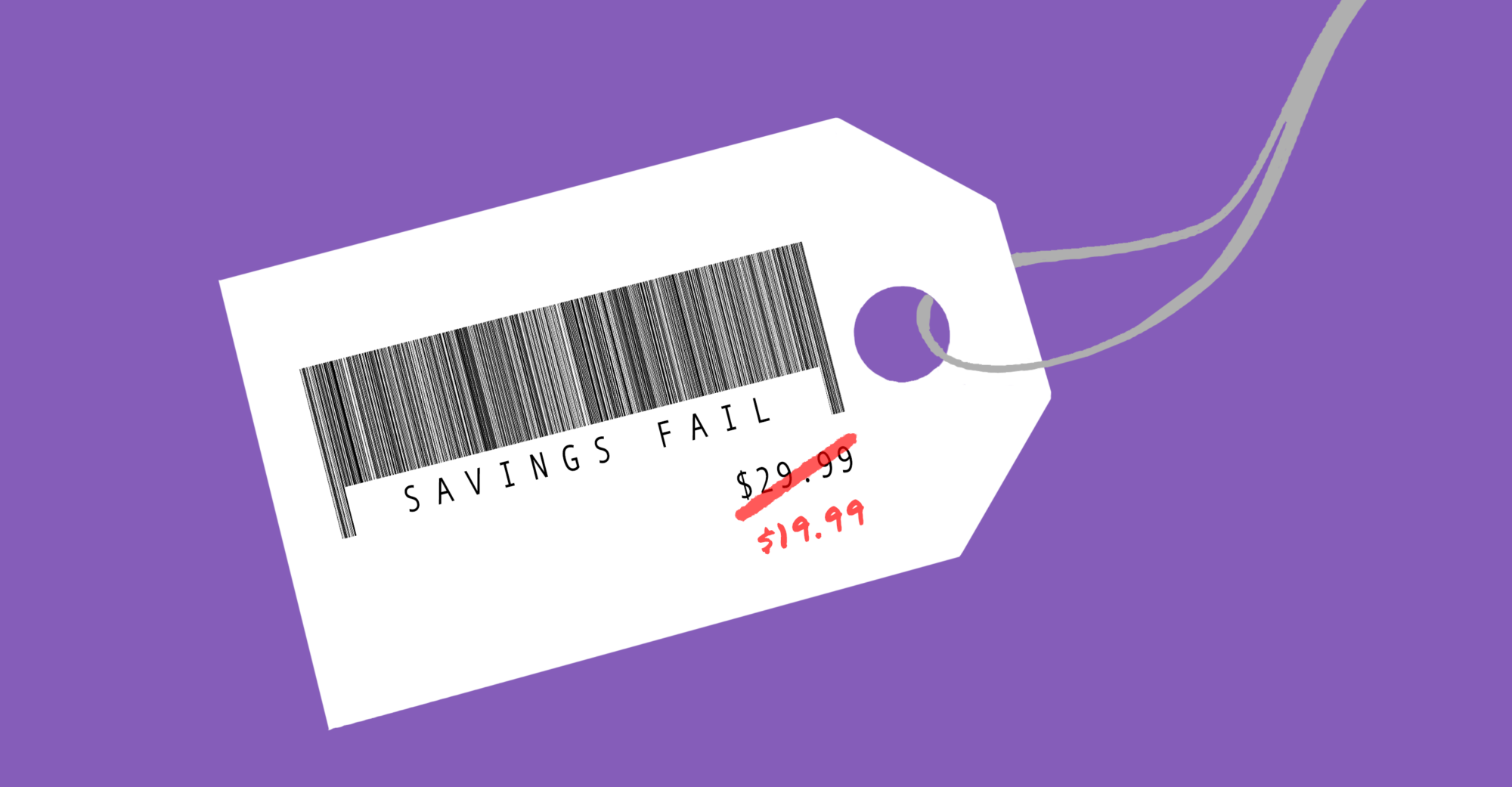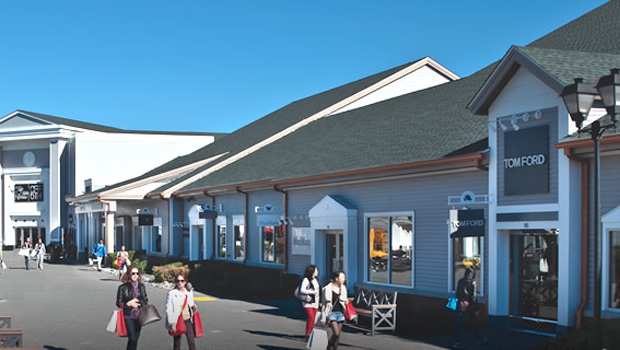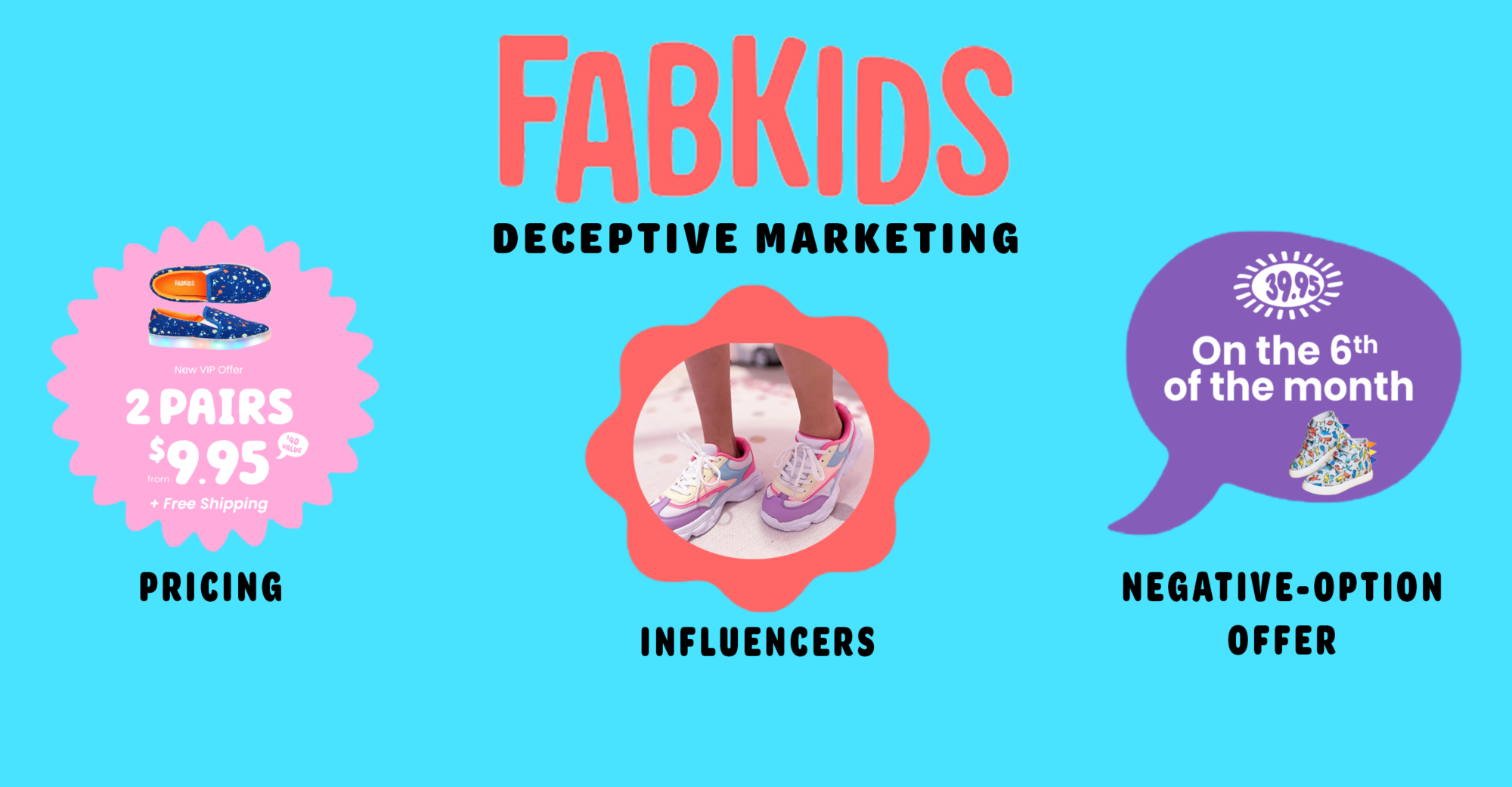
CATrends: Fake Reference Prices
The illusion of savings.
School is about to start, and the annual outlet mall pilgrimage is underway. People flock to outlet malls from far and wide, believing them to be magical havens where expensive brands can be purchased for less. To some extent, this is true, but it’s not the whole story. Outlet stores use a host of tactics to get your money, some of which you might not be aware of.
Far, Far Away
Outlet malls are located far away from retail stores—30-60 miles, usually. That way, there is less competition and comparison with retail. The other benefit to setting up shop in Bumblefuzzle, USA is that consumers who make the schlep out feel compelled to make the trip “worth it” by buying more stuff.
According to Ellen Ruppel Shell, author of Cheap: The High Cost of Discount Culture :
Visiting the outlets demands an investment in time, deliberation, and energy beyond what we invest in most other leisure activities. And because the effort required to reach and shop at them is substantial, even extraordinary, the experience of going to the outlet is elevated in our minds to “special occasion” status.
Purposefully Uncomfortable
Once you make the long day’s journey into discount-land, you might hope for a leisurely, pleasant shopping experience. But everything about outlet malls is designed to keep you uncomfortable so that you keep moving and keep shopping. Time spent lingering over delicious food or interesting diversions is time spent not forking over your cash, so those things are not to be found.
Different Products
Many consumers believe that outlet stores carry retail products that have minor defects, are out of season, or were overstocked. This perception leads them to believe they’re gaming the system in some way, scoring a great deal on genuine retail products. In reality, very few items in the stores were originally intended for retail locations. Eighty-two percent of products sold in outlet stores are manufactured specifically for the outlet with the intention that they will be sold at lower prices. Ninety percent of retailers use this practice. In order to achieve lower prices, some manufacturers sacrifice quality. Retail Analyst Howard Davidowitz told NPR:
A lot of times, merchandise is made more cheaply for the outlet stores, and, of course, it sells for less. But it’s not the same quality. So you’re paying less, and you’re getting less.
Imaginary “Original Prices”
Because many outlet products are manufactured specifically for the outlet, the original retail price is just a meaningless number. The item never really sold at retail; the marked-down price is the real price. There may be a few original retail items marked down for real, but they are in the minority. You can sometimes identify an imaginary markdown if the outlet store uses a separate label for their outlet merchandise or if you’ve happened to notice an item in a retail store the previous season, but otherwise it’s almost impossible to know.
The practice of marking a high reference price next to a lower actual price is known as price anchoring. Consumers are willing to pay higher prices for items if they believe the “real” price is even higher. According to Shell:
We are more likely to buy a mattress—or any number of items—with a high reference price than an item with a lower, more accurate reference price, regardless of its quality or even our real preferences. And as a result of these very high reference prices, our concept of prices of all kinds remains skewed, biasing our thinking on future purchases.
So, that $100 jacket doesn’t “really” cost $600, even if the price tag says it used to. Products cost what you pay for them—end of story.
The other tricky thing about outlet prices is that while they are in general about 25% lower than retail, it’s not a given that you will always find better deals there. A good sale at a retail store can rival an outlet’s prices, so if you’re searching for a bargain, it’s best to check prices everywhere. Remember too that outlet stores tend to rotate sales so that at any given time, something is being sold at an alluring discount. Patience and research, as always, pay off.
The illusion of savings.
Online retailer deceptively advertises members-only prices, TINA.org investigation finds.
Comparing the amount companies agree to pay to settle deceptive marketing charges with their annual revenue.


